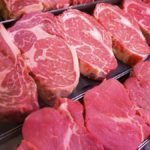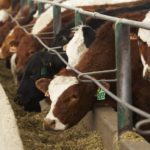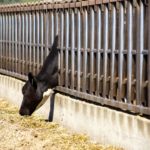Compared to last week, western Canadian feeder cattle markets traded steady to $5 lower on average. Small volumes were available last week, which distorted the price structure. Many feedlot hands will rotate holidays through July; therefore, feedlot operators don’t want to bring in fresh replacements with a skeleton staff. Recent rains across Saskatchewan and Alberta […] Read more

Klassen: Feeder market enters summer doldrums

Klassen: Fed cattle bounce supports yearling market
Compared to last week, western Canadian yearling prices were relatively unchanged while calf values were extremely variable. In Alberta, calf prices were holding value but in Saskatchewan and Manitoba, feeder cattle under 650 lbs. were $3 to as much as $8 lower in some cases. Recent rains in Saskatchewan have come too late and auction […] Read more

Klassen: Feeder market shrugs off feed grain rally
Compared to last week, western Canadian feeder cattle prices were $2-$5 higher on average. Noted strength was in the 700-plus-lb. categories, which spilt over into the lighter calves. Quality groups of yearlings were limited and the scarcity fear factor had a grip on the market. The U.S. Department of Agriculture lowered its fourth-quarter beef production […] Read more

Klassen: Feeder cattle demand softens
Compared to last week, western Canadian yearling prices were $2-$4 lower on average while calves were down $3-$5 depending on the region. Weakness in the fed cattle market continues to spill over into the feeder complex, as margins drift further into red ink. Alberta packers were buying fed cattle in the range of $245-$246 delivered […] Read more

Higher beef production weighs on cattle complex
Market Update with Jerry Klassen: Consumers will have to eat more beef to compensate
In my previous article, we mentioned that the cattle market was in a transition phase. Market-ready supplies of fed cattle during April were relatively tight while beef demand was moving through a seasonal high. The fed and feeder cattle markets softened during May as beef production grew. North American beef demand is considered inelastic so […] Read more

Klassen: Feeder market absorbs double-edged sword
Compared to last week, western Canadian feeder cattle markets traded $3 to as much as $6 lower. The feed grains market is writing the story for the feeder market. August feeder cattle futures lost $10 this past week and U.S. cash feeder prices were also down US$4-$6 compared to seven days earlier. Ideas are that […] Read more

Klassen: Rising feed grains weigh on feeder market
Compared to the previous week, western Canadian feeder cattle markets traded steady to $3 lower over the past week. In some cases, calves were down $4 to as much as $6. Rising feed grain costs weighed on the overall feeder complex. Feed barley in southern Alberta traded in the range of $265-$275 per tonne delivered, […] Read more

Klassen: Feeder market finds support
Compared to last week, western Canadian yearling markets traded steady to $2 lower while calves traded $3 higher to as much as $8 lower. Adverse weather across much of the U.S. Midwest set a negative tone on both sides of the border. U.S. feeder cattle markets were down US$3-$6 from seven days earlier. Corn futures […] Read more

Beef complex moving toward higher supplies
Market Update with Jerry Klassen: Already-tight feeder margins expected to be negative by early fall
During the last week of April, Alberta packers were buying fed cattle in the range of $160 to $163 on a live basis. The market has been contending with tighter supplies of market-ready cattle south of the border. At the same time, wholesale beef prices have been percolating higher as retail and restaurant demand moves […] Read more

Klassen: Feeder market continues to soften
Compared to last week, western Canadian feeder cattle markets traded $3-$5 lower on average with some auctions down $5 to as much as $8. Alberta packers were buying fed cattle on a dressed basis at $258 delivered, down $15 from the April highs. Feeding margins have slid into negative territory quite rapidly and could be […] Read more


